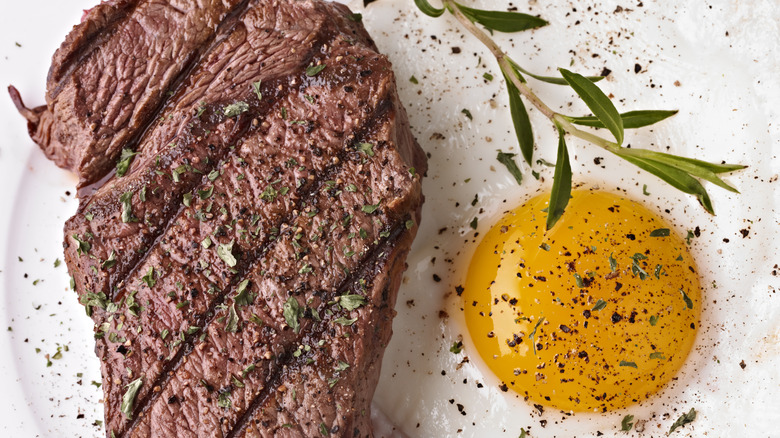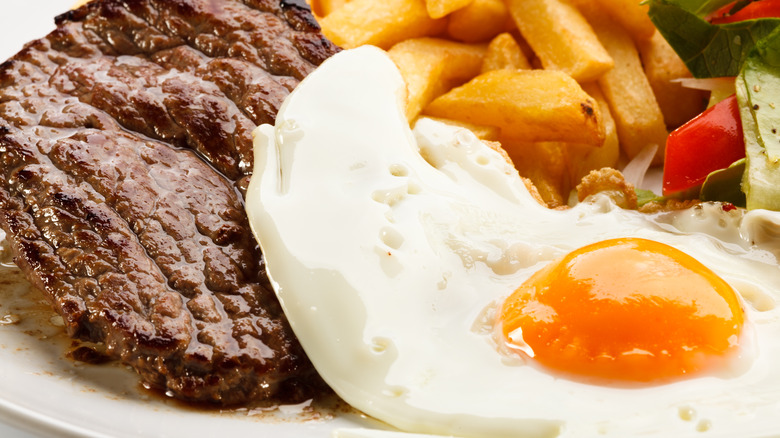The History Behind Why We Eat Steak For Breakfast
Steak for breakfast is a wonderfully indulgent meal choice. And while we probably aren't chowing down on it every morning, it is one that we love to order out at a breakfast joint as a special treat. You can find it on the menus of mom-and-pop diners, as well as breakfast chains all across the continental United States. But it actually has its origins down under. Steak and eggs started as an Australian breakfast staple in the 19th century. It was so beloved that it was informally considered Australia's national dish — an unknown Australian author even exclaimed its virtues in a 1926 poem, saying steak and eggs, "Tis the succulent cut of a bovine who rose to his fame by his fall; 'Tis wrought to a marvellous broweness 'mid a golden half-halo of fat, Soft-dusted with pollen-like pepper and crowned with a warm butter."
During World War II, the United States Marine Corps discovered the hearty Australian breakfast item and, of course fell, in love with it. The succulent dish was packed with tons of protein and kept soldiers well-fueled for the day ahead. When they returned home, steak and eggs came with them. Australians were required to reduce their beef consumption thanks to rationing orders, and eggs were in short supply, so steak and eggs fell away as the nation's top dish while it skyrocketed in popularity on the other side of the world.
From Australia to NASA
The Marines weren't the last folks in uniform to love a bit of steak and eggs in the morning. NASA astronauts have been enjoying steak and eggs as their pre-flight meal for over sixty years. Alan Shepard, the American astronaut who once walked on the moon, started the tradition before his journey to space in 1961. He enjoyed the steak and eggs with a glass of orange juice and tea, and it's been considered the traditional meal service since.
This is around the time that steak and eggs became popular with the general American public. After World War II, the United States had an economic boom, which correlates with diets rich in animal protein. America's beef consumption increased sharply in 1950, so when its people learned they could have it not just at the weekend dinner table, but first thing in the morning and topped with two silky eggs, they were all too ready to partake. It remains a much-loved dish today.

